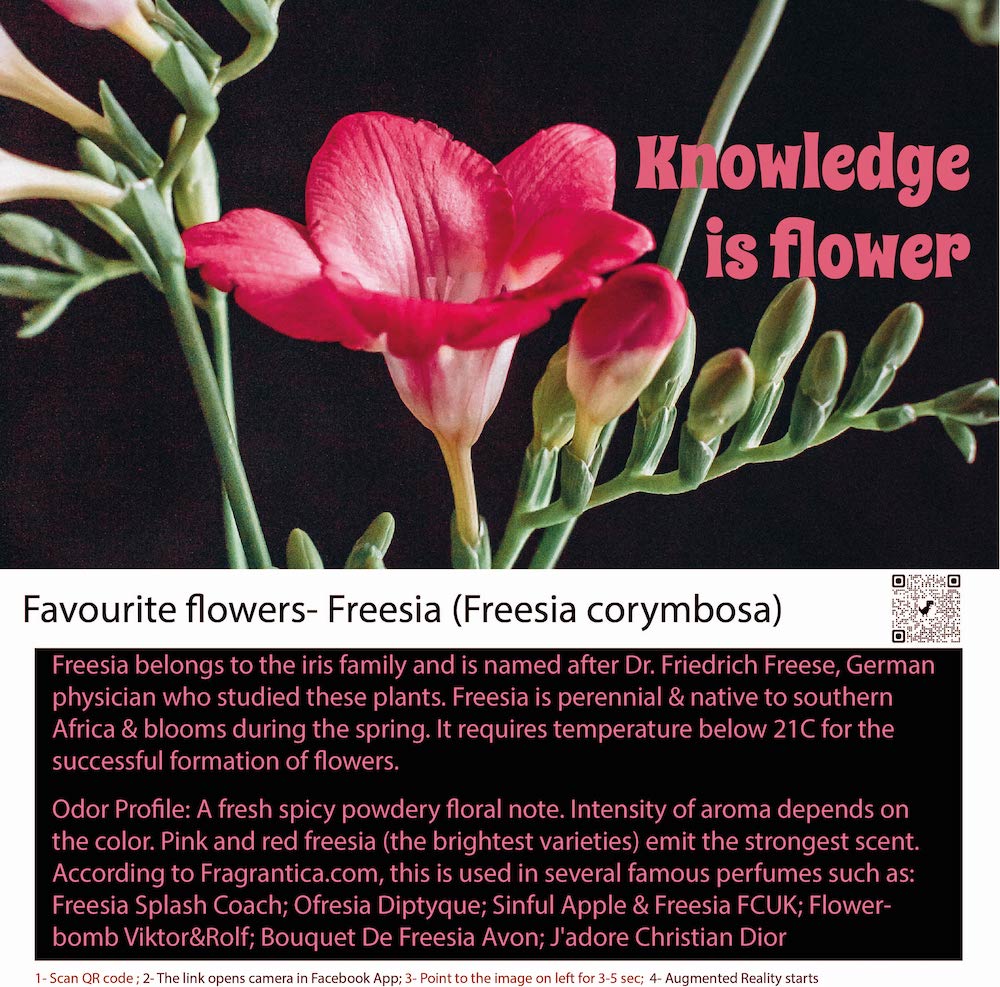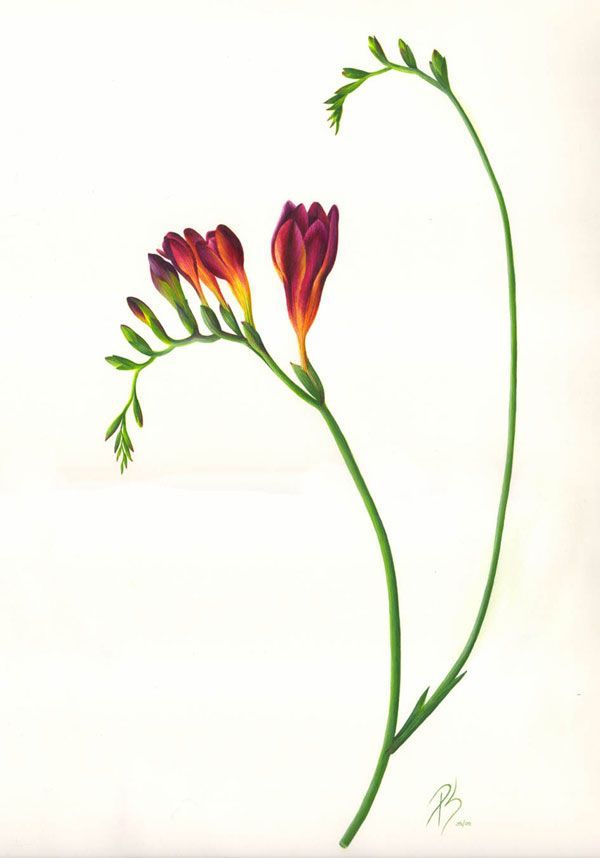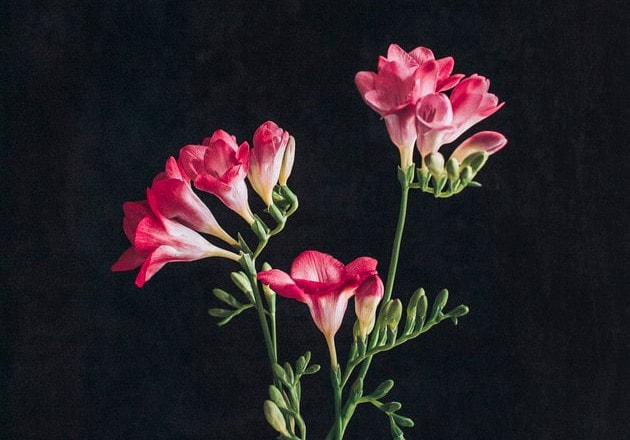Discover the Essence of Girl Freesia at Scentopia
Freesia: A Fragrant Symphony of Beauty and Grace
Freesia, with its captivating beauty and enchanting fragrance, is a flower that has charmed hearts for centuries. From its use in perfumes and therapeutic oils to its surprising culinary applications, medicinal uses, and fascinating history, freesia is a flower that continues to delight and intrigue.
1. History and Origin: Freesias, scientifically known as Freesia spp., are native to southern Africa, particularly South Africa. The flower was named in honor of Friedrich Heinrich Theodor Freese, a German physician and botanist who contributed significantly to the study of South African flora in the 19th century.
Freesias were first discovered in the 1830s and quickly gained popularity for their stunning appearance and delightful fragrance. Today, freesias are cultivated in various regions around the world, including Europe, Asia, and the Americas.
2. Perfumes and Fragrance: Freesia's alluring scent is its most celebrated feature, making it a prized ingredient in the world of perfumery. The fragrance of freesia is fresh, floral, and slightly sweet, with citrus undertones. It exudes a sense of elegance and grace, making it a popular choice for perfumes and scented products.
Freesia essential oil is obtained through a meticulous process of steam distillation of the flowers. This oil is highly valued by perfumers as it adds a delicate and enchanting floral note to fragrances. It is often used as a heart or middle note in perfumes, creating a symphony of scents that captivates the senses.
3. Therapeutic Oils and Aromatherapy: In aromatherapy, freesia essential oil is cherished for its calming and uplifting properties. The aroma of freesia is believed to reduce stress, anxiety, and depression, promoting a sense of tranquility and well-being.
When used in diffusers or added to bathwater, freesia essential oil can create a relaxing and rejuvenating ambiance, helping to soothe the mind and soul after a long day.
4. Culinary Uses: While not as commonly used in culinary applications as some other flowers, freesia has found its way into certain dishes and beverages. The petals of the flower are sometimes used to add a touch of color and fragrance to salads, desserts, and drinks.
Freesia-infused syrups and teas are also occasionally enjoyed for their subtle floral flavor and pleasing aroma.
5. Medicinal and Traditional Uses: In traditional medicine, freesias have been used for their potential health benefits. In some cultures, the flowers and leaves of freesia are used to make herbal infusions or poultices to soothe skin irritations and minor wounds.
The fragrance of freesia is also believed to have a positive impact on mood and emotional well-being, leading to its use in certain traditional remedies for relaxation and stress relief.
6. Fun and Crazy Facts: Freesias have some interesting and fun facts associated with them. One unique aspect of freesias is their ability to continue growing even after they are cut and placed in vases. This trait has made them a popular choice for floral arrangements and bouquets, as they can maintain their beauty and fragrance for an extended period.
Another interesting fact is that freesias are often associated with symbols of friendship and trust, making them a meaningful gift to express affection and appreciation for loved ones.
7. Cultivation and Varieties: Freesias are relatively easy to grow and are popular choices for home gardeners. They prefer well-draining soil and partial sunlight, making them ideal for outdoor gardens and pots.
There are several varieties of freesias available, each boasting its unique color and fragrance. Some popular cultivars include the classic white freesia, vibrant yellow, cheerful pink, and romantic red.
Freesia is a flower that embodies beauty, grace, and elegance. Its captivating fragrance has earned it a cherished place in perfumery and aromatherapy, while its delightful appearance has made it a favorite for floral arrangements and gardens. Freesia's subtle culinary uses and potential medicinal benefits add to its allure, making it a flower that continues to enchant and delight people around the world. So, the next time you encounter the mesmerizing blooms of freesia, take a moment to savor their fragrance and appreciate the joy they bring to our lives.
Freesia, with its captivating beauty and enchanting fragrance, is a flower that has charmed hearts for centuries. From its use in perfumes and therapeutic oils to its surprising culinary applications, medicinal uses, and fascinating history, freesia is a flower that continues to delight and intrigue.
1. History and Origin: Freesias, scientifically known as Freesia spp., are native to southern Africa, particularly South Africa. The flower was named in honor of Friedrich Heinrich Theodor Freese, a German physician and botanist who contributed significantly to the study of South African flora in the 19th century.
Freesias were first discovered in the 1830s and quickly gained popularity for their stunning appearance and delightful fragrance. Today, freesias are cultivated in various regions around the world, including Europe, Asia, and the Americas.
2. Perfumes and Fragrance: Freesia's alluring scent is its most celebrated feature, making it a prized ingredient in the world of perfumery. The fragrance of freesia is fresh, floral, and slightly sweet, with citrus undertones. It exudes a sense of elegance and grace, making it a popular choice for perfumes and scented products.
Freesia essential oil is obtained through a meticulous process of steam distillation of the flowers. This oil is highly valued by perfumers as it adds a delicate and enchanting floral note to fragrances. It is often used as a heart or middle note in perfumes, creating a symphony of scents that captivates the senses.
3. Therapeutic Oils and Aromatherapy: In aromatherapy, freesia essential oil is cherished for its calming and uplifting properties. The aroma of freesia is believed to reduce stress, anxiety, and depression, promoting a sense of tranquility and well-being.
When used in diffusers or added to bathwater, freesia essential oil can create a relaxing and rejuvenating ambiance, helping to soothe the mind and soul after a long day.
4. Culinary Uses: While not as commonly used in culinary applications as some other flowers, freesia has found its way into certain dishes and beverages. The petals of the flower are sometimes used to add a touch of color and fragrance to salads, desserts, and drinks.
Freesia-infused syrups and teas are also occasionally enjoyed for their subtle floral flavor and pleasing aroma.
5. Medicinal and Traditional Uses: In traditional medicine, freesias have been used for their potential health benefits. In some cultures, the flowers and leaves of freesia are used to make herbal infusions or poultices to soothe skin irritations and minor wounds.
The fragrance of freesia is also believed to have a positive impact on mood and emotional well-being, leading to its use in certain traditional remedies for relaxation and stress relief.
6. Fun and Crazy Facts: Freesias have some interesting and fun facts associated with them. One unique aspect of freesias is their ability to continue growing even after they are cut and placed in vases. This trait has made them a popular choice for floral arrangements and bouquets, as they can maintain their beauty and fragrance for an extended period.
Another interesting fact is that freesias are often associated with symbols of friendship and trust, making them a meaningful gift to express affection and appreciation for loved ones.
7. Cultivation and Varieties: Freesias are relatively easy to grow and are popular choices for home gardeners. They prefer well-draining soil and partial sunlight, making them ideal for outdoor gardens and pots.
There are several varieties of freesias available, each boasting its unique color and fragrance. Some popular cultivars include the classic white freesia, vibrant yellow, cheerful pink, and romantic red.
Freesia is a flower that embodies beauty, grace, and elegance. Its captivating fragrance has earned it a cherished place in perfumery and aromatherapy, while its delightful appearance has made it a favorite for floral arrangements and gardens. Freesia's subtle culinary uses and potential medicinal benefits add to its allure, making it a flower that continues to enchant and delight people around the world. So, the next time you encounter the mesmerizing blooms of freesia, take a moment to savor their fragrance and appreciate the joy they bring to our lives.
To experience augmented reality, please open the Facebook-app using QR code and point to the image below
Elevate Your Senses with Premium Floral Ingredients
Named after the German botanist and medical practitioner, Friedrich Freese, the plant is native to southern Africa, from Kenya south to South Africa.
They are herbaceous plants which grow from a conical corm 1–2.5 cm diameter, with tufts of narrow leaves 10–30 cm long, and a sparsely branched stem 10–40 cm. Most species have fragrant narrowly funnel-shaped flowers
Freesia is a genus of herbaceous perennial plants in the Iridaceae family. They are native to South Africa and are known for their brightly colored, fragrant flowers. The flowers come in a wide range of colors including white, yellow, orange, pink, red, purple and bi-colored. They are popular as cut flowers and are often used in floral arrangements. The flowers are also used to make perfumes, as they have a light, sweet, and floral scent.
Freesias are relatively easy to grow and are well suited to a wide range of climates, including temperate and Mediterranean regions. They can be grown from bulbs and they prefer well-drained soil and full sun to partial shade.
Freesia has been used traditionally in Africa as a medicine to relieve pain, and as a treatment for stomach problems, but this use is not well studied and more research is needed to confirm its effectiveness and safety. The plant is also known for its fragrance and is used in the perfumery industry to make fragrances.
It's important to keep in mind that Freesia bulbs and leaves are toxic if ingested and can cause skin irritation and allergic reactions, so care should be taken when handling them.
They are herbaceous plants which grow from a conical corm 1–2.5 cm diameter, with tufts of narrow leaves 10–30 cm long, and a sparsely branched stem 10–40 cm. Most species have fragrant narrowly funnel-shaped flowers
Freesia is a genus of herbaceous perennial plants in the Iridaceae family. They are native to South Africa and are known for their brightly colored, fragrant flowers. The flowers come in a wide range of colors including white, yellow, orange, pink, red, purple and bi-colored. They are popular as cut flowers and are often used in floral arrangements. The flowers are also used to make perfumes, as they have a light, sweet, and floral scent.
Freesias are relatively easy to grow and are well suited to a wide range of climates, including temperate and Mediterranean regions. They can be grown from bulbs and they prefer well-drained soil and full sun to partial shade.
Freesia has been used traditionally in Africa as a medicine to relieve pain, and as a treatment for stomach problems, but this use is not well studied and more research is needed to confirm its effectiveness and safety. The plant is also known for its fragrance and is used in the perfumery industry to make fragrances.
It's important to keep in mind that Freesia bulbs and leaves are toxic if ingested and can cause skin irritation and allergic reactions, so care should be taken when handling them.
Captivating Aromas of Freesia Essence
Due to their delicate fragrance, freesias are one of the most popular flowers in the world. However, they are very difficult to grow in domestic gardens and their petals are extremely delicate. They are also popular as cut flowers and are often used for bouquets.
Freesia is a popular flower in Singapore and is widely cultivated for its brightly colored and fragrant flowers. They are often used in floral arrangements, as well as in the production of perfumes and other fragrances.
Freesias are well-suited to the tropical climate of Singapore, and can be grown in a variety of settings including gardens, parks, and flower beds. They are also grown in greenhouses and nurseries for commercial use.
In Singapore, Freesia flowers can be found in many flower shops, supermarkets and online flower delivery services. They are also used in weddings, events and other occasions as a decorative flower.
It's worth noting that in Singapore, Freesia is not used in traditional medicine and it's mostly used for ornamental purposes. It is only in Africa that freesia is used as medicine. In Africa, Freesia is used traditionally to relieve pain and as a treatment for stomach problems. But as I mentioned before, more research is needed to confirm its effectiveness and safety.
Freesia is a popular flower in Singapore and is widely cultivated for its brightly colored and fragrant flowers. They are often used in floral arrangements, as well as in the production of perfumes and other fragrances.
Freesias are well-suited to the tropical climate of Singapore, and can be grown in a variety of settings including gardens, parks, and flower beds. They are also grown in greenhouses and nurseries for commercial use.
In Singapore, Freesia flowers can be found in many flower shops, supermarkets and online flower delivery services. They are also used in weddings, events and other occasions as a decorative flower.
It's worth noting that in Singapore, Freesia is not used in traditional medicine and it's mostly used for ornamental purposes. It is only in Africa that freesia is used as medicine. In Africa, Freesia is used traditionally to relieve pain and as a treatment for stomach problems. But as I mentioned before, more research is needed to confirm its effectiveness and safety.
Scentopia's Commitment to Fragrance Excellence
Freesia flower symbolizes friendship, trust, thoughtfulness and innocence. They are a popular gift in various cultures.
- According to the Victorian language of flowers, the freesia is the ultimate flower of trust.
- In the United States, the freesia is the official flower to commemorate a couple’s seventh wedding anniversary.
- In numerology, freesias signify the number nine, which signifies selflessness and obligation.
- Since the 1950s, freesias have been widely used as wedding flowers because they represent both the purity of the bride as well as the trust between the couple.
- The name "Freesia" was chosen by a German botanist, Friedrich Freese, who named the genus after a close friend, Dr. Friedrich H. T. Freese.
- Freesia flowers have a unique and pleasant fragrance, which is why they are used in the production of perfumes, candles, and other fragrances.
- Freesias are popular as cut flowers and are often used in floral arrangements. They are available in a wide range of colors, including white, yellow, orange, pink, red, purple and bi-colored.
- Freesia bulbs are toxic if ingested, so care should be taken when handling them.
- Freesia is the national flower of the island nation of Nauru.
- Freesias are considered to be a symbol of innocence, friendship and trust.
- Freesias are known to be easy to grow, they can be planted in well-drained soil and they prefer full sun to partial shade.
- Freesias are native to South Africa and are well suited to a wide range of climates, including temperate and Mediterranean regions.
- In some cultures, Freesia flowers are given as a symbol of trust and friendship.
- Freesia flowers are also used in the production of cosmetics and as an ingredient in aromatherapy and massage oils.
Embrace Nature's Beauty with Girl Freesia
The scent of Freesia flowers is often described as light, sweet, and floral. The scent is composed of a variety of volatile organic compounds (VOCs) that are responsible for its unique aroma. Some of the key compounds that contribute to the scent of Freesia include:
- Linalool: This is a common terpene alcohol that is found in many flowers and plants. It has a floral, lavender-like aroma.
- Nerol: This is a terpene alcohol that is found in many flowers and plants. It has a sweet, floral aroma with a hint of citrus.
- Geraniol: This is a terpene alcohol that is found in many flowers and plants. It has a floral, rose-like aroma.
- Farnesol: This is a terpene alcohol that is found in many flowers and plants. It has a floral, fresh, and citrus-like aroma.
- Geranyl acetate: This is an ester that is found in many flowers and plants. It has a floral, fresh, and citrus-like aroma.
- Eugenol: This is an phenylpropene that is found in many flowers and plants, it has a spicy and clove-like aroma.
Unmatched Quality of Freesia in Our Fragrance Products
Freesia is a popular note in many perfumes and other fragrances. The sweet, floral aroma of Freesia can add a light, refreshing touch to a variety of scents, making it a versatile ingredient in perfumery. Here are a few famous perfumes that include Freesia as a note:
- Dior J'adore: This classic scent features Freesia as a top note, adding a light, floral touch to the overall fragrance.
- Jo Malone Peony & Blush Suede: This scent has a combination of peony and freesia, which creates a sweet and floral aroma.
- Estée Lauder Beautiful: This scent includes freesia as a middle note which gives a floral aroma that is fresh and sophisticated.
- Thierry Mugler Angel: This scent includes freesia as a middle note which gives a floral aroma that is fresh and sophisticated.
- Yves Saint Laurent Black Opium: This scent includes Freesia as a middle note, adding a floral touch to the overall fragrance.
- Marc Jacobs Daisy: This scent includes Freesia as a middle note, adding a floral touch to the overall fragrance.
- Gucci Flora: This scent includes Freesia as a top note, adding a floral touch to the overall fragrance.
- Calvin Klein Euphoria: This scent includes Freesia as a middle note, adding a floral touch to the overall fragrance.
- Giorgio Armani Acqua di Gio: This scent includes Freesia as a middle note, adding a floral touch to the overall fragrance.
- Lancôme La vie est belle: This scent includes Freesia as a middle note, adding a floral touch to the overall fragrance.
- Burberry Brit: This scent includes Freesia as a middle note, adding a floral touch to the overall fragrance.
- Hugo Boss Boss Orange: This scent includes Freesia as a middle note, adding a floral touch to the overall fragrance.
- Ralph Lauren Romance: This scent includes Freesia as a middle note, adding a floral touch to the overall fragrance.
- Salvatore Ferragamo Signorina: This scent includes Freesia as a middle note, adding a floral touch to the overall fragrance.
Join Scentopia, Sentosa's latest tourist attraction wonderful orchid scent crafting, fragrance tour, bridal shower or corporate team building which includes perfume making onsite and offsite, beach activities and more. We also serve primary school learning journey, secondary students and pupil on industrial excursions. Know more about our orchids perfume bar or therapeutic orchid scents and other wellness aromas. Conatct Perfume workshop or book a scent crafting session here.






